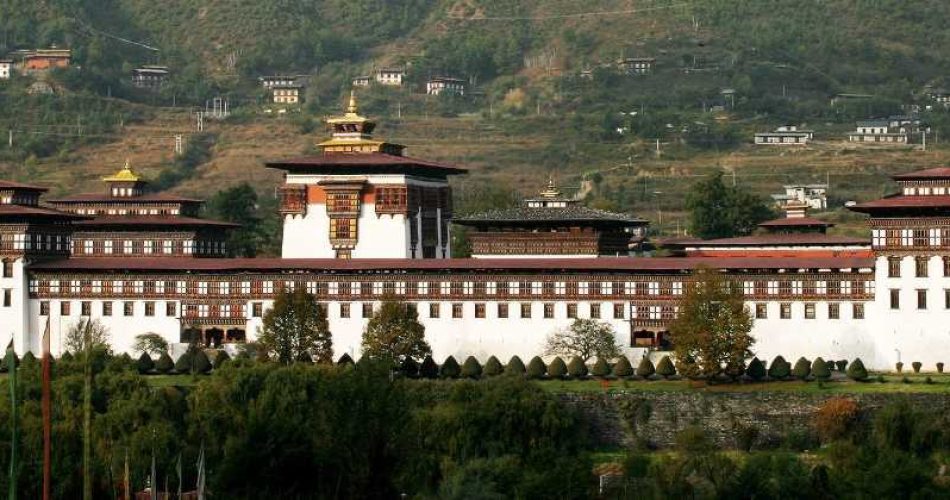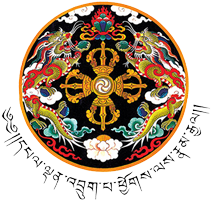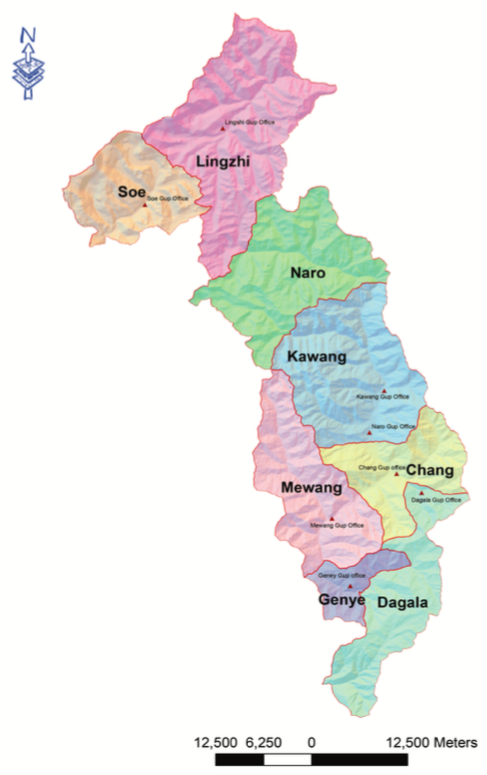Vision
“A peaceful and progressive Dzongkhag with optimal socio-economic development in harmony with nature and culture.”
MISSION
To ensure equitable and sustainable socio-economic well being of the people through quality services.

Brief Background
With a total area of 1,748.590 square kilometers, Thimphu is the capital city of Bhutan. The city lies in the western part of the country. It is located at an altitude of 2,330 meters above the sea level. The Dzongkhag has 42.9% of its area under forest cover. The Dzongkhag office is located at Canglimithang.
Thimphu Dzongkhag has eight Gewogs namely Chang, Kawang, Dagala, Genekha, Mewang, Lingzhi, Soe and Naro. The Dzongkhag has 8 Gups, 8 Mangmis, 8 Gewog Administrative Officers,39 Tshogpas, 16 Dzongkhag Tshogdu Members and 55 Gewog Tshogdu members. The Dzongkhag has one Drungkhag of Lingzhi looks after the three Gewogs of Soe, Lingzhi and Naro. The Dzonghag has 40 chiwogs, 198 villages comprising 2,204 households. It has a population of 24,185 as per the Population and Housing Census of Bhutan 2017 with 13,526 male and 10,659 female. The projected population of the Dzongkhag for the year 2021 is 154,378 which comprises 79,554 male and 74,824 female.
The Dzongkhag has a total road network of 234.758 km in 2021, which includes 50.850 km of the national highway that connects Thimphu, Chuzom and Dochula. The Dzongkhag has 555 civil servants in 2021, which is a sharp decrease from the 603 civil servants in 2020.
The Dzongkhag has coverage of improved functional water supply has increased 99.9% in 2020 from 98.9% in 2019. 88.2% of the population had households with pour flush toilet facility in 2020 compared to 3,006 households in 2019. The Dzongkhag has a total of 4,446 students, comprising 2,115 males and 2,331 female in 2021. The total number of students has increased by 1.82% the previous year was 4,092 students.
The total length of farm roads has increased to 117.222 km in 2021 from 101.010 km in 2017. The total length of irrigation channels has increased to 166.600 km in 2021 from 154.300 km in 2017 and covered an area of 2,186.05 acres, benefitting about 1,582 household in 2021, which is a marked increased from 1,408 households in 2017. The length of electric fencing has increased from 91.160 km in 2017 to 172.440 km in 2021. The Dzongkhag had 5 food processing units, 52 agriculture mills, 114 power tillers and 73 mini tillers in 2021.
Cattle population in Thimphu Dzongkhag has gone down from 4,780 in 2016 to 3,844 in 2020. Fresh milk production has shot up to 1,901,492 litres in 2020 from 1,786,795 litres in 2016. The number of yaks also increased from 10,331 in 2016 to 10,871 in 2020. The Dzongkhag has 5 RNR-EC livestock centres, 4 livestock extension centres, 1 veterinary hospital, 263 dairy farms, 19 dairy farmers group, 29 poultry farms, 1 poultry group, 8 piggery farms and 2 milk processing units, 6 number of households supported with poultry shed construction materials, 19 number of households supported with biogas plant, 6 number of semi-commercial poultry, piggery and dairy farm established.
The Dzongkhag has 4 mining sites, 4 quarry sites, 1 municipal waste disposal site. The Dzongkhag has many important historical, cultural and religious heritage sites. Thimphu Dzongkhag has 68 government owned lhakhangs, 5 latruel, 34 community owned lhakhangs, 26 privately owned lhakhangs and 353 chortens. The Dzongkhag has 5 lobdra, 3 shedras, 6 drupdeys, 2 gomdeys, 2 gelong dratshangs and 2 anim dratshangs in 2021.
The number of households electrified in the Dzongkhag has risen from 6,604 in 2019 to 6,910 in 2020. The electricity coverage in Thimphu Dzongkhag has increased from 61.6% in 2016 to 72.2% in 2020. There is no electricity in chiwogs of Naro gewog namely Phagay, Mentsephu, Zomthang and Tagsithang having 17 villages and similarly to Dagala gewog namely three chiwogs of Wangdro, Doongdrog and Gaytala having 34 villages and all the households are supplied with solar light set.
Mobile network coverage in 2020 has shot up to 82.8% from 81.8% in 2016
Contact us
- Dzongkhag Administration Thimphu, Bhutan
- Dzong Post Box No: 168
- Phone No:02334997
- E-Mail: helpdesk@thimphu.gov.bt
Quick Links
Our Location
Copyright © 2025 - Thimphu Dzongkhag

